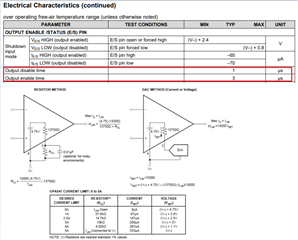The OPA548 has a current limit feature. The datasheet does not specify the turn off time for the part if the current limit is exceeded. Please let me know the turn off time if the current limit is exceeded.
-
Ask a related question
What is a related question?A related question is a question created from another question. When the related question is created, it will be automatically linked to the original question.


